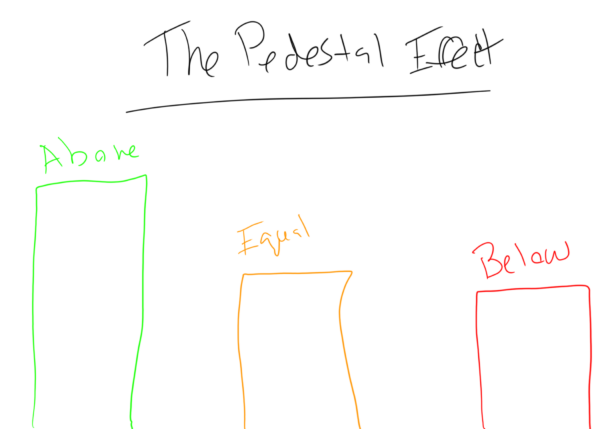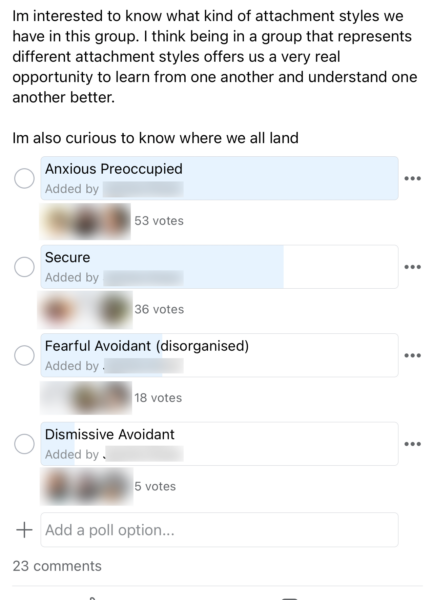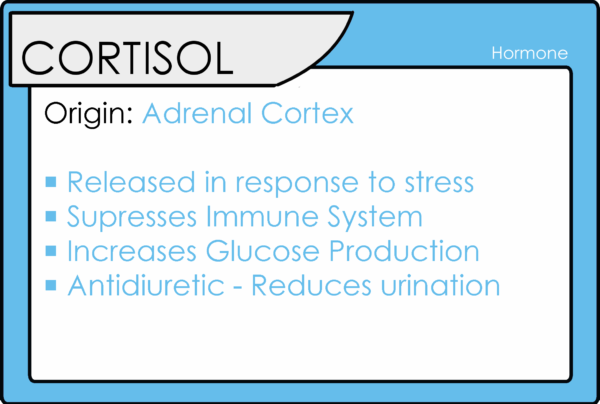This is my complete guide on limerence.
In this in-depth guide I’m going to answer,
- What limerence is
- How long you can expect it to last
- Why it can last so long
- My theory on cortisol and how it connects with limerence
- Looking at the three stages of limerence
- Where the halo effect fits in to them
So, if you’re ready to learn about limerence then you came to the right place.

What Are Your Chances of Getting Your Ex Boyfriend Back?
Take the quizWhat Is Limerence?
If you want to understand anything about Limerence you must first learn about this woman,
This is Dorothy Tennov, who is most closely associated with Limerence.
Limerence is a term that was first coined by her in her book “Love and Limerence: The Experience of Being in Love” in 1979. It describes a state of mind where someone is obsessively infatuated with another person and is constantly thinking about them to the point where it impacts their daily life.
They’ve literally made ENTIRE MOVIES based on this concept,
I always end up using 500 days of summer in my analogies because it’s my favorite romantic comedy ever and it relates so closely to breakups but in this particular case it’s an incredibly apt comparison (personal preference aside.)
Spoiler Alert
Throughout the film, the protagonist, Tom , experiences an intense, obsessive infatuation for Summer (who I suppose is the antagonist,) Tom’s constant rumination on Summer, the idealization of her character, and his dependency on her for his emotional well-being encapsulates the intrusive thinking and longing often associated with being overcome by limerence.
But what I feel makes the movie so perfect for our discussion is that it doesn’t shy away from showcasing limerence’s aftermath. After their eventual breakup, Tom continues to grapple with his feelings for Summer, alternating between hope for reciprocation and despair, demonstrating how limerence can linger and cause emotional turmoil even after the relationship ends.
Watch it!
Consider it homework.
Because what I’m about to say might be incredibly frightening.
How Long Does Limerence Last?
When I was researching this topic a common suggested keyword kept coming up.
“What’s the average amount of time that limerence will last…”
Yet, what I found is that no one ever agrees which is ironic considered in Dorothy Tennov’s research,
The duration of limerence was found to be, on average, between 18 months and 3 years. However, individual cases can differ significantly. Some people may experience limerence for a shorter period of time, while for others it could last many years, particularly if the feelings are intermittently reinforced.
So, why is it that other, very reputable sources, are coming in with different timeframes?
Well, I think it has a lot to do with how WIDE that range actually is.
18 months to 3 years is really long.

What Are Your Chances of Getting Your Ex Boyfriend Back?
Take the quizAnd everyone’s experience is always different with how long they are stuck in that state.
So I figured I’d dig a bit deeper and try to understand why it lasts so long.
Why Does Limerence Last So Long?
Honestly it boils down to 5 distinct reasons.
- Intermittent reinforcement
- Idealization
- Fantasy and Rumination
- Lack of Closure
- Underlying Attachment Factors
Let’s take a beat and talk about each one of these factors.
Reason #1: Intermittent Reinforcement:
First things first, let’s get the technical definition out of the way,
This psychological principle can greatly prolong limerence. If the person being limerent towards (the limerent object) occasionally reciprocates the limerent person’s feelings or shows positive responses, it can reinforce and intensify the limerent person’s obsession, even if most interactions are neutral or negative. This hope for reciprocation keeps the limerent person “hooked.”
There’s a really great How I Met Your Mother episode that I’ve referenced in the past on this website that perfectly encapsulates this concept.
It’s about “being on someone’s hook.”
They give you just enough hope to stay put and keep you hooked but, as is the case in the video I just embedded, when a better opportunity comes along they jump at the sign.
But it’s this hope that keeps you coming back for more.
And it prevents you from fully moving on.
Reason #2: Idealization:
Ok, official definition,
The limerent person often idealizes the limerent object, perceiving them as perfect or near-perfect. This idealization can make it harder for the limerent person to let go of their feelings, as they’ve created an idealized version of the person in their mind that’s difficult to reconcile with reality.
Again, you can see I’ve talked about that in a few different cases.
First, with my pedestal effect concept which is outlined in this very ugly graphic I drew,
- Above us on the pedestal; The unobtainable and respectable
- Equal to us on the pedestal : The obtainable and respectable
- Below us on the pedestal: The obtainable and disrespected
Basically we always want someone or desire someone that we deem as unobtainable.
And then I’ve even talked about this with my research on the phantom ex avoidant syndrome outlined here,
Which is basically when someone with an avoidant attachment style creates a scenario where they ruminate on the one that got away, creating this idealized version of a relationship in their head.
Reason #3: Fantasy and Rumination:
Here’s our definition,
The limerent person may spend a lot of time fantasizing about a relationship with the limerent object and ruminating on every interaction they’ve had. This can strengthen and prolong the feelings of limerence, as the fantasy often feeds the emotional connection.
I’ve talked about this extensively with our finding that it’s usually only after our clients have “moved on” from their ex that their ex wants to come back.
Why?

What Are Your Chances of Getting Your Ex Boyfriend Back?
Take the quizWell, I talk about that in this video,
But basically avoidants don’t allow themselves permission to ruminate or “miss their partner” until they feel that person is unavailable or has moved on.
Only then will the avoidant allow their nostalgia to kick in.
Reason #4: Lack of Closure:
If the limerent object never explicitly rejects the limerent person, the limerent person may hold onto hope that their feelings will eventually be reciprocated. Without clear rejection, the feelings of limerence can persist for a long time.
I mean, I think an argument can be made that most of the clients that we have here at Ex Boyfriend Recovery are experiencing some form of limerence due to this reason.
Not really sure there’s too much for me to add here.
But the next one.
Oh, I have a lot to say about that.
Reason #5: Underlying Attachment Factors:
Some individuals may be more prone to experiencing limerence, particularly those with certain personality traits or mental health conditions. For example, people who struggle with low self-esteem, anxiety, or obsessive-compulsive tendencies may be more likely to experience long-lasting limerence.
Seeing as how most of our clients believe they have an anxious attachment style,
I think an argument can certainly be made that since individual with an anxious attachment style are often hypersensitive to signals from others and tend to be preoccupied with their relationships they are going to be more prone to limerence.
Since limerence is often defined by its obsessive rumination, idealization of the limerent object, and intense desire for reciprocation, everything appears to align closely with anxious attachment patterns.
In their quest for security and affirmation, individuals with an anxious attachment might easily slip into a limerent state, obsessing over their object of affection and interpreting even slight positive cues as confirmation of reciprocation. Not to mention the anxiously attached individual’s heightened fear of rejection or loss could amplify the distress often associated with unrequited limerence.
The Role Cortisol Plays In Limerence
If you aren’t aware of what happens to your body during a breakup I’d like to turn your attention to this graphic,
That elevated neuro chemical happens to be cortisol.
Also known as the stress hormone.
This abrupt increase in cortisol can induce a state of hyperarousal, heightening an individual’s sensitivity to emotional stimuli.
In the context of limerence, this heightened emotional state could amplify the obsessive and intrusive thoughts about the former partner, leading to a more intense experience of limerence post-breakup.
The individual might find themselves ruminating more on the past relationship, idealizing the ex-partner, and longing for reciprocation or reunion, all hallmarks of limerence. Not to mention, cortisol’s role in modulating our memory and attention could potentially lead to a more focused and persistent recollection of the ex-partner, reinforcing the limerent state.
A few months ago I actually came across this really interesting article where Dr. Jamie Lee was quoted saying,

What Are Your Chances of Getting Your Ex Boyfriend Back?
Take the quizIt can take three to four hours for your cortisol levels to return to normal after a stress response (like an argument or high-stakes meeting), but if your levels have been high for some time, it can take up to six months to balance them out.
And you know what happens to make cortisol high?
BREAKUPS!
And you know what keeps aggravating your cortisol, keeping it in a high state?
Limerence.
Dissecting The Three Stages Of Limerence:
There are three main stages of limerence,
- Infatuation or Intrusive Thinking
- Crystallization and Longing
- Despair, Resolution, or Reciprocation
Let’s take a second and talk a bit about how these three stages typically work.
Stage One: Infatuation or Intrusive Thinking:
This is the initial stage when someone develops a crush or strong attraction towards another person.
The limerent object (the person the feelings are directed towards) begins to dominate the limerent person’s thoughts.
These thoughts can be invasive and persistent, often bordering on obsession.
The limerent person might fantasize about a relationship with the limerent object and start to interpret even the smallest actions or comments from the limerent object as signs of reciprocation.
Stage Two: Crystallization and Longing:
As limerence develops, the feelings and thoughts associated with the limerent object become more intense.
The limerent person may idealize the limerent object, overlooking their flaws and amplifying their positive attributes.
The limerent person may experience mood swings, with their mood largely dependent on the perceived interest or disinterest of the limerent object.
There’s a strong longing for reciprocation from the limerent object during this stage, along with a heightened fear of rejection.
This also happens to be the stage where the Halo Effect occurs:
The “halo effect” is a psychological phenomenon where a positive impression in one area influences one’s impression in other areas. In the context of limerence, the limerent person often idealizes the object of their limerence, perceiving them as nearly perfect or without fault.
Because of this idealization, the limerent person might attribute positive qualities to the limerent object that they may not actually possess, or they might downplay or completely overlook their negative traits or actions.
This is the halo effect in action – the positive feelings of limerence cast a ‘halo’ of sorts over the limerent object, leading the limerent person to see them in an overwhelmingly positive light.
For example, if the limerent object is kind in one instance, the limerent person might generalize this kindness to all areas of their life, believing them to be a universally kind and good person, even if there’s evidence to the contrary.
It’s also worth noting that the halo effect can intensify feelings of limerence because it can deepen the limerent person’s perceived connection or attachment to the limerent object.
The idealized image can be very powerful and difficult to reconcile with reality, potentially leading to distress if the limerent object doesn’t live up to these idealized expectations.
Stage Three: Despair, Resolution, or Reciprocation:
In the final phase, one of three outcomes typically occur. Despair sets in if the limerent person realizes their feelings are not reciprocated; they may experience a range of emotions from sadness to anger, and the limerence may gradually fade over time.
Resolution can happen when the limerent person actively works to overcome their limerence, perhaps with the help of a mental health professional.
Reciprocation occurs when the limerent object returns the feelings of the limerent person, which can lead to a transition from limerence into a more balanced, mutual form of love, though this is not always the case.





kris
January 16, 2025 at 1:26 am
I feel that mystery is at the root of limerince and that unattainable love object recognizes your attraction to them and gives you just enough to remain intrigued. It’s a very powerful factor, at least for me. Some people esp women do intentionally cultivate an aura of mystery even though they might be an ordinary person they know how to spark the fantasies of another.
Short story here. I met this cashier at the Fresh Market who was extra nice and complimentary towards me…maybe a little too much…felt a bit insincere as the limerince progressed. I felt lonely and it’d been a while since a woman paid much attention to me. Well I was feeling lonely and in need of a friend and I sort of went out of my way to shop there and maybe go through her line til I figured out she knew and was kinda giving me a cold shoulder.
So I let it go….I still shopped there but did not go out of my way to say hi or go through her line…so one day I was in another line and I looked up and she was smiling directly at me and you could have knocked me over a feather…she walked away slowly as I watched her go and anyone observing what happened would know that I was head over heels for her.
My last day in the city I went through her line and so wanted to say something cause I knew I’d never see her again….and I felt sad about it…cause i did not even know her last name or her age (although she was younger than me). It bothered me ever since….not in a romantic way or anything I just felt drawn to her in a way I can’t really explain but a therapist told me that all attraction is mutual. I don’t know about that but if I know that someone is not attracted I am not attracted to them at all. Why would I be?
So I think people might give signals and it does not mean much, maybe they like they attention but they have no intention of being reciprocal.
Well anyway she had a very unusual first name and I actually managed to find her! Now before you think that is weird and stalkerish, I’ll never contact her. It’s just that she stoked my curiosity and withdrew and told me enough to make me think that she kinda liked me and found me attractive, complimenting my smile and calling me “lovely lady”
It made me sad to never see her again but that made me feel happy. It was a very lovely compliment. and I hope, sincere.
But I can’t help but wonder if she ever thinks about me….I guess I’ll never know…but that’s part of the allure of limerince too….hopeless romantics
Sarah O'Connor
March 5, 2024 at 7:48 am
I seem to have projected at least some of my feelings onto a guy at work during this transition from long term long distance relationship which doesn’t seem to have any hope. At first it may have been reciprocal but now I am stuck with my loneliness and realisation that nobody else is going to come close. I have started therapy. I am also using the experience to fuel my art.
mick
September 11, 2023 at 12:02 am
This is probably the most important article of a largely ignored subject, which is a shame because it is so insightful and many people going through a break-up questioning their sanity in the process are actually experiencing. I for one now know I am not nuts – and can bring this up in counseling.